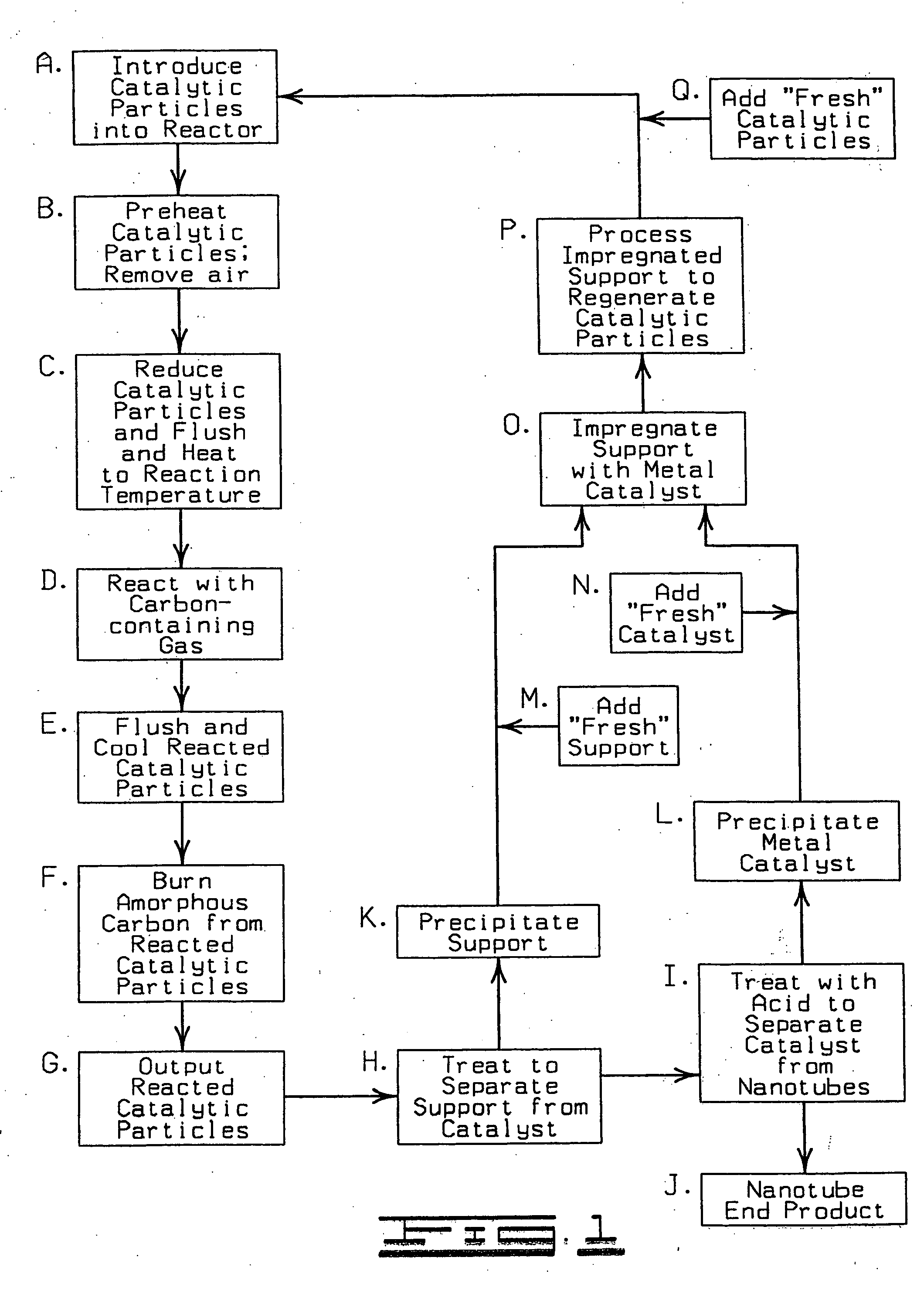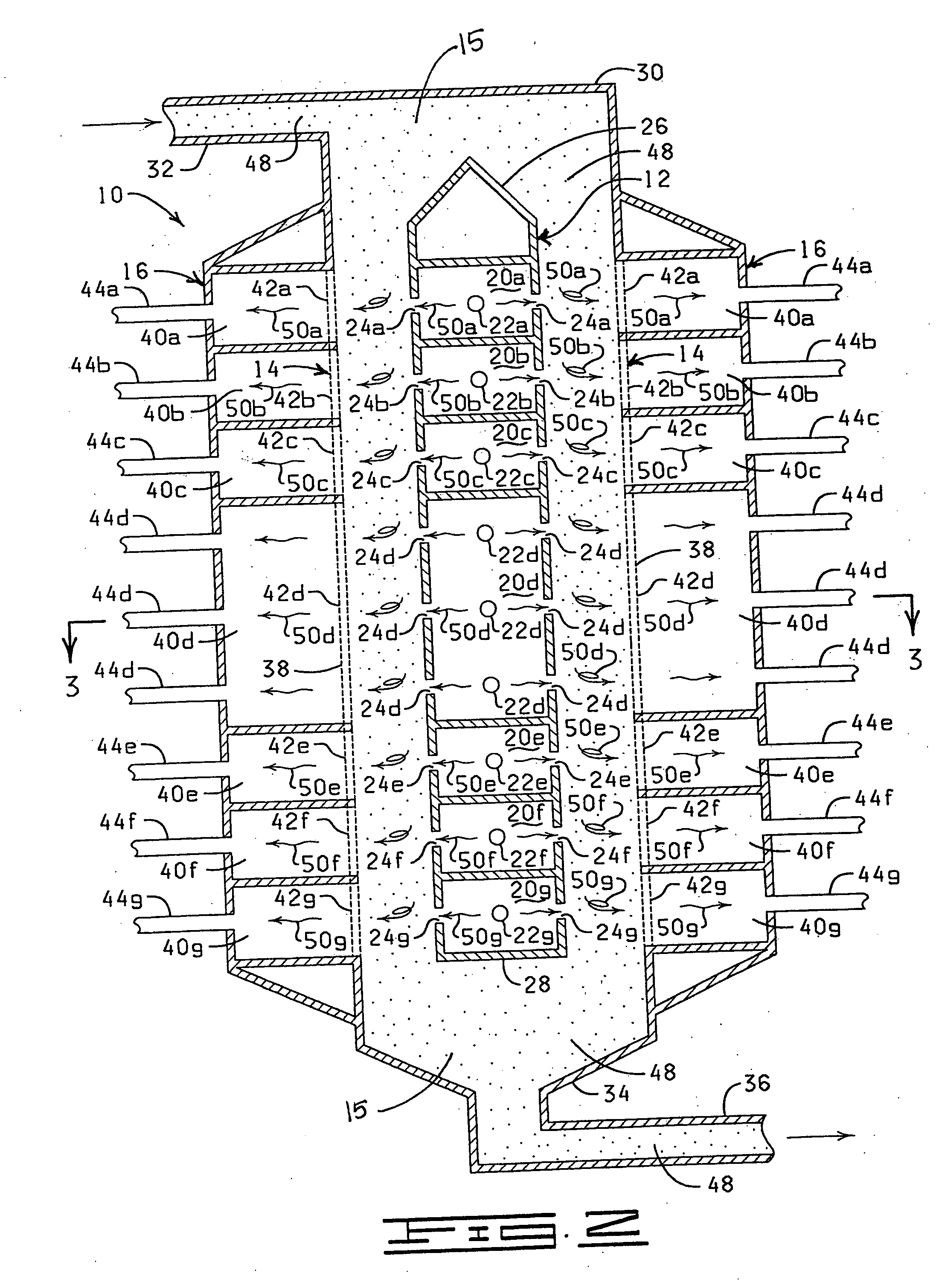Process and apparatus for producing single-walled carbon nanotubes
a technology of carbon nanotubes and processes, applied in the direction of carbonsing rags, catalyst regeneration/reactivation, physical/chemical process catalysts, etc., can solve the problem of not being able to produce nanotube quantities by using these catalysts, and the production process of metal catalysts is expensiv
- Summary
- Abstract
- Description
- Claims
- Application Information
AI Technical Summary
Benefits of technology
Problems solved by technology
Method used
Image
Examples
example 1
Optimal Reaction Conditions
The SWNTs are obtained through the following exemplary exothermic and reversible reaction known as the Boudouard reaction:
2CO(g)⇄C(SWNT)(s)+CO2(g)
This reaction is exothermic with a ΔHR of −41,220 cal / mol at 298° C. and an equilibrium constant of 0.047 psi−1 at 700° C.
Under the reaction conditions, the Co:Mo catalyst would be expected to deactivate due to different phenomena, such as the formation of the SWNTs themselves, the formation of other carbon species and / or the reduction of the catalyst by the carbon-containing gas.
Since the reaction and the deactivation occur at the same time, in order to maximize the yield of the reaction, it is important to find the conditions under which the formation of the SWNTs is much faster than the deactivation of the catalyst. Many of those conditions are determined by the fact that this reaction is exothermic and reversible.
To calculate the equilibrium conversions under different conditions, the equilibrium con...
experimental verification
of Optimal Reaction Conditions
example 2
Catalytic Materials
A Co—Mo catalyst with a Co:Mo molar ratio of 1:3 was prepared by impregnating a silica gel support (SiO2, Aldrich, 70-230 mesh, average pore size 6 nm, BET area 480 m2 / g, pore volume 0.75 cm3 / g), with aqueous solutions of Cobalt Nitrate and Ammonium Heptamolybdate to obtain the bimetallic catalyst. The liquid / solid ratio was kept at incipient-wetness conditions, which for this support corresponds to 0.63 cm3 / g. The total metal content was 6 wt %. After impregnation, the catalysts were first dried in air at room temperature, then in an oven at 120° C., and finally calcined in flowing air at 500° C.
Two batches of catalysts with different particle sizes were prepared using different grounding techniques at the moment of the impregnation. In the first batch, the original particle size of the impregnated support was used (i.e., particle size about 212-62 microns, 70-230 mesh). In the second batch, the particle size was reduced by grinding the particles into a fine ...
PUM
 Login to View More
Login to View More Abstract
Description
Claims
Application Information
 Login to View More
Login to View More - R&D
- Intellectual Property
- Life Sciences
- Materials
- Tech Scout
- Unparalleled Data Quality
- Higher Quality Content
- 60% Fewer Hallucinations
Browse by: Latest US Patents, China's latest patents, Technical Efficacy Thesaurus, Application Domain, Technology Topic, Popular Technical Reports.
© 2025 PatSnap. All rights reserved.Legal|Privacy policy|Modern Slavery Act Transparency Statement|Sitemap|About US| Contact US: help@patsnap.com



